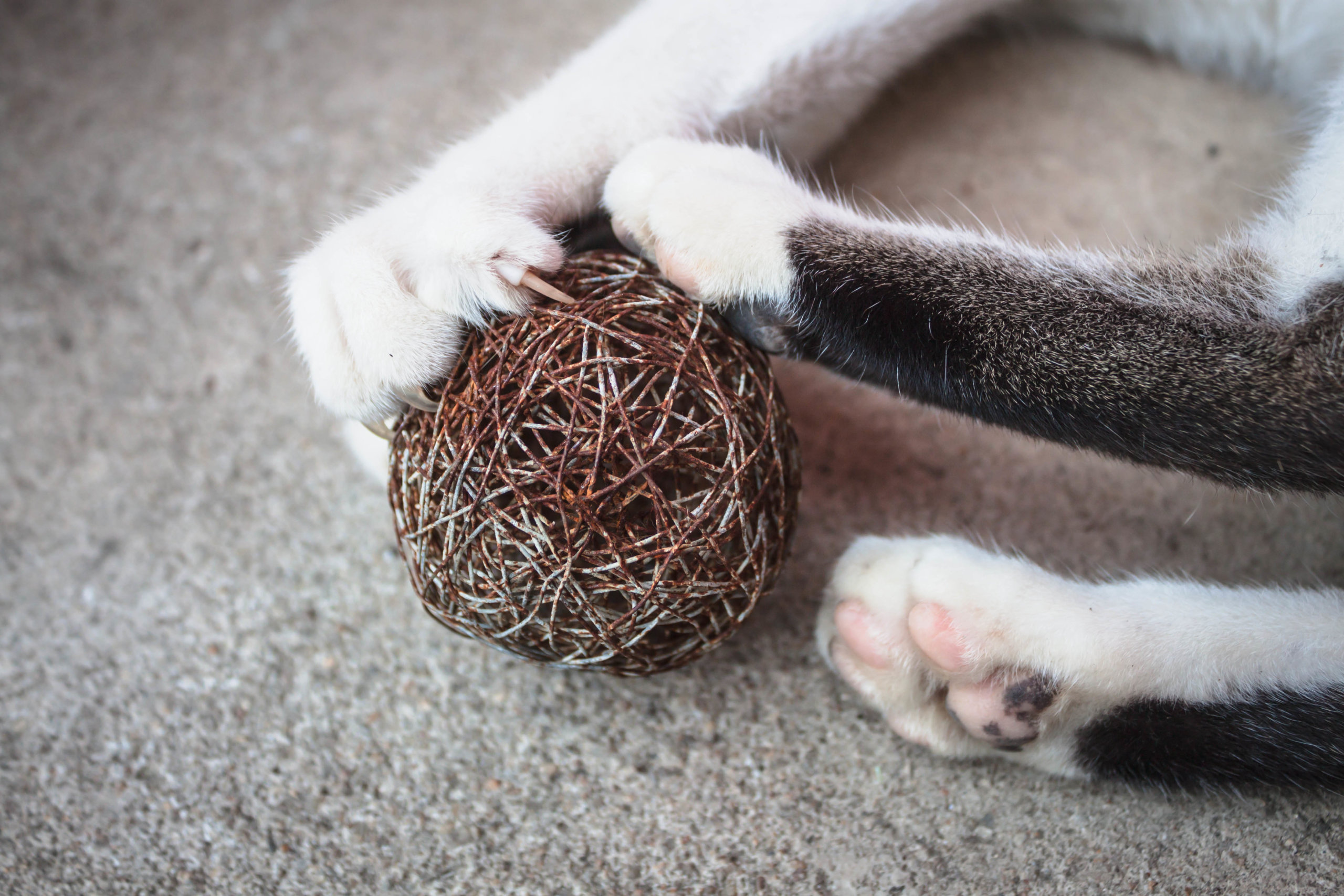
Declawing Alternatives
We strive to meet the standards provided by the American Association of Feline Practitioners, and their stance against elective declawing. Below is education and alternatives to declawing cats.
WHAT IS DECLAWING?
Feline declawing is an elective and ethically controversial procedure, which is NOT medically necessary for cats in most instances. Declawing entails the amputation of a cat’s third phalanx [P3], or third ‘toe bone.’ Unlike human nails, cats’ claws are attached to the last bone in their toes. A comparison in human terms would be cutting off a person’s finger at the last joint of each finger. It is important to understand that scratching is normal behavior for cats, which has an inherent function. The primary reason cats scratch is to maintain the necessary claw motion used in hunting and climbing, as well as a means to stretch their body. Scratching serves to groom the front claws and leave markers of the cat’s presence. A cat’s claws grow in layers and scratching removes the worn outer layer to expose the new growth inside. Cat owners must therefore provide alternatives for cats such as suitable scratchers.
ALTERNATIVES TO DECLAWING
Scratching posts/pads
Provide your cat with suitable ‘scratchers’ where they can exhibit normal scratching behavior. Scratchers come in multiple styles and textures. It is important to experiment with a variety of textures and types of scratchers to determine which your cat prefers. Some examples include scratching posts or pads with sisal rope or rough fabric, cardboard boxes, and lumber or logs. Scratchers can be vertical or horizontal and there are even varieties that blend into your home decor. The placement of scratchers is very important. Cats often stretch or scratch when they wake up so consider placing one near where your cat sleeps. It may also be effective to place a scratcher near or in front of a cat’s preferred, yet undesirable, scratching object (e.g. corner of the couch). Kittens and cats can be trained to use scratchers by rewarding use of the scratcher with the cat’s favorite treat. If the cat scratches elsewhere, they should be gently picked up, taken to the scratcher, and then rewarded. Cats should always be positively reinforced and never punished.
Regular claw trimming
Regularly trimming your cat’s claws can prevent injury and damage to household items. Proper feline nail trimmers should be used to prevent splintering of the claws. The frequency of claw trimming will depend on your cat’s lifestyle. Indoor cats, kittens, and older cats will need more regular nail trims, whereas outdoor cats may naturally wear down their nails requiring less frequent trimming. If possible, start trimming as kittens so they become comfortable with the process early on. If your cat does not like claw trimmings start slow, offer breaks, and make it a familiar routine. Ask your veterinarian for advice or a demonstration on trimming your cat’s claws. Always trim claws in a calm environment and provide positive reinforcement. Proper training to scratch on appropriate surfaces, combined with nail care, can prevent damage in the home.
Temporary synthetic nail caps
These caps are glued over your cat’s nails to help prevent human injury and damage to household items. The nail caps usually need to be re-applied every 4-6 weeks; therefore, they may be a less desirable alternative to regular nail trimming, suitable scratchers, and environmental enrichment.
Synthetic facial pheromone sprays/diffusers
Continued scratching by cats may be related to stress, anxiety, attention seeking, or a perceived lack of security in their environment. Anxiety can also be intensified by punishment, thus driving the cat to increase scratching behaviors in the same or other undesirable locations in the home. Consider using synthetic facial pheromone sprays and/or diffusers to help relieve anxiety or stress. Apply a synthetic pheromone spray such as Feliway® on the objects or areas in your home where your cat has exhibited undesired scratching. Do so after cleaning with soap and water to remove the communication marking scents left by your cat’s paws. Applying daily comforting pheromones can prevent your cat’s need to mark these areas again. Feliway® should not be sprayed on the desired scratcher. If undesirable scratching occurs in several rooms, indicating a more generalized anxiety or stress, it is recommended to also plug-in a synthetic pheromone diffuser such as Feliway® to comfort your cat in their home environment.
Appropriate environmental enrichment
Providing your cat with an environment that is enriching is vital to teaching your cat to scratch on appropriate objects. Destructive scratching can occur in cats because their needs have not been fully met. Cats need the proper resources to perform their natural behaviors and have control over their social interactions. You can enhance your cat’s health and well-being by ensuring all their needs are met in the home.
Declawing Alternatives in Garden City, Michigan
To Learn More about declawing alternatives, call Morrison Animal Hospital at 734-425-6140 or contact us online.
Additional education on the risks of declawing your cat can be found below:
- Basic Indoor Cat Needs – Scratching
- Cat Scratching: Explanations & Solutions
- Selecting the Perfect Post
- Living With a Clawed Cat
